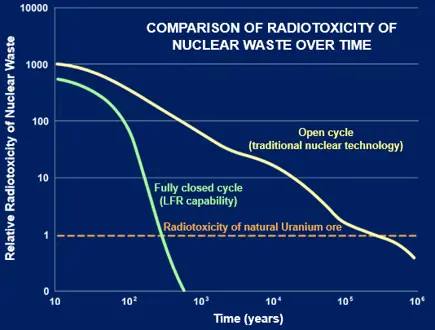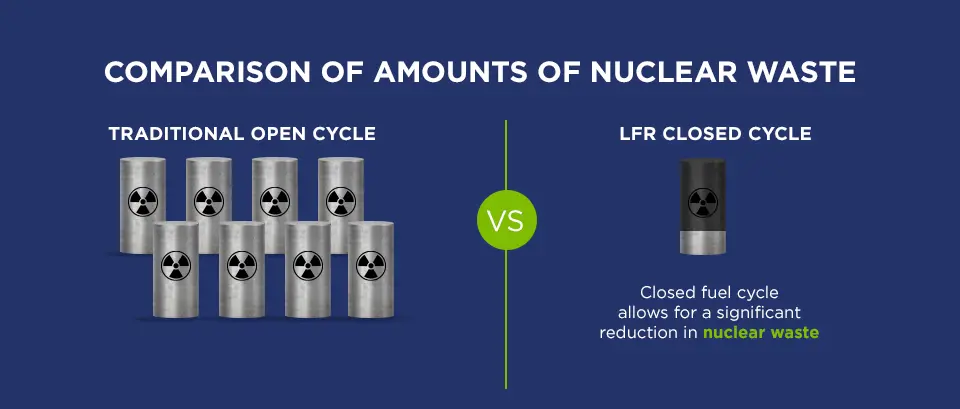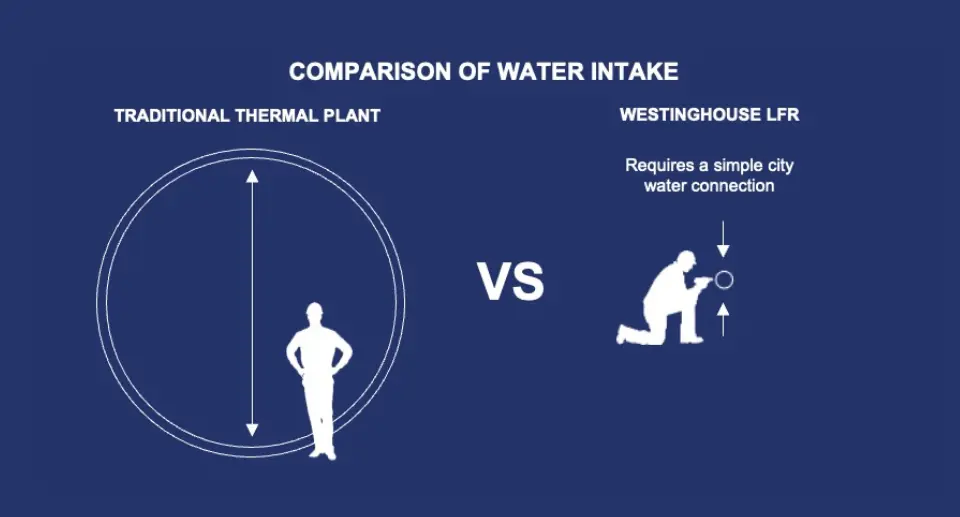The Westinghouse LFR has the potential to reduce the volume of used nuclear fuel even below the small amount generated by traditional nuclear power plants, as what those plants consider “waste” is instead an asset for LFR. Specifically, by virtue of operation in the fast neutron spectrum and once operating in concert with adequate fuel reprocessing facilities, LFR can use the potential energy otherwise left unused in spent fuel by current reactors. This leads to a 200-fold increase in the amount of energy extracted from the same amount of mined uranium compared to current reactors, thereby improving the efficiency with which natural resources are used. In this mode of operation, known as “closed fuel cycle," LFR also achieves the following performance relative to current reactors operating in the more traditional “open fuel cycle”:

A hundred-fold shortening of the time that used fuel takes to reduce its radiotoxicity to natural uranium ore values, i.e., ~300 years vs over 100,000 years

A 20-fold reduction in the amount of used fuel produced per unit of energy generated
In addition to sustainability gains on both natural uranium resource utilization and waste management, LFR’s sustainability is further enhanced by its low water intake requirements. As shown graphically below, the use of air (vs water) to cool its Power Conversion System allows the Westinghouse LFR to use a simple city water connection for auxiliary services rather than the large intake channels and nearby bodies of water necessitated in traditional nuclear power plants. Also, due to its world-class inlet steam conditions, this results in little to no performance penalty while enhancing LFR’s sustainability, allowing the plant to be sited almost anywhere. In many cases, this will also serve to lower overall owners' costs (and thus the total project cost).
